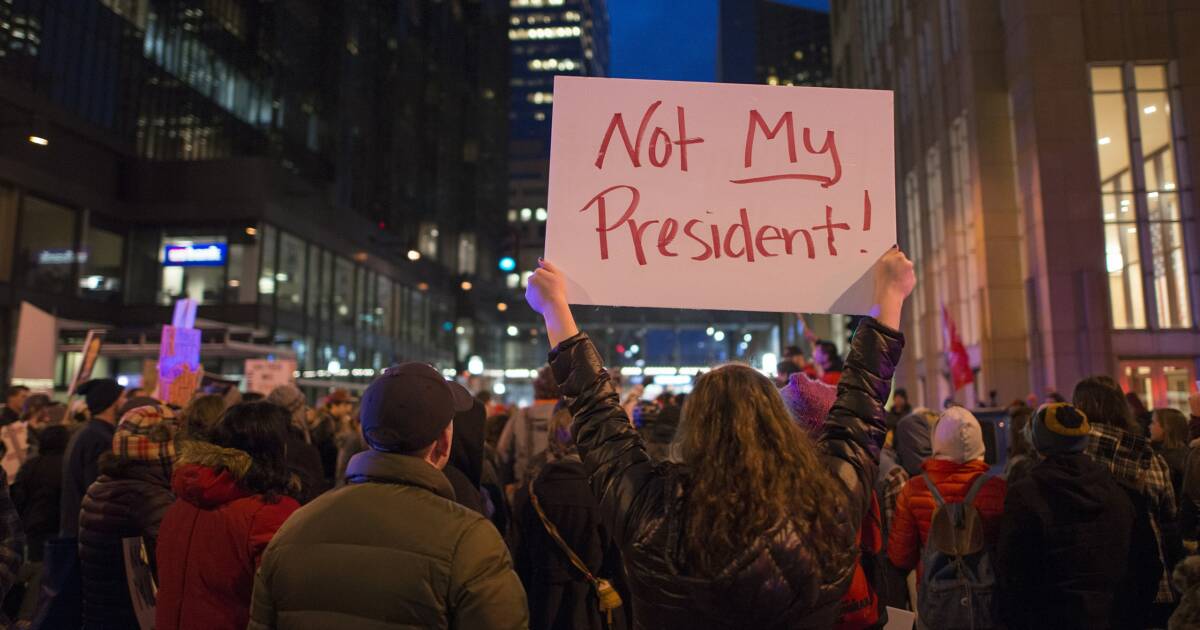I could not be less surprised at the collaboration and cozy relationships between Twitter safety, programming, and management with certain government entities within the DOJ and the intelligence community. There’s a context here that’s been lightly covered, and that’s the “stop Trump” movement which was in full swing throughout his presidency.
I do believe Twitter safety chief Yoel Roth did his best to protect his company from bots, foreign influence, and to keep the site from becoming (more) a sewer. Back in 2019, Youtuber Destin Sandlin (Smarter Every Day) met with Twitter to get a better idea of what they were dealing with daily. It’s a heavy lift to keep a free social media site, well, “free” as in speech, but also “free” from nefarious actors trying to peddle disinformation, hacks, spyware, malware, and scams. There were several factors here that led to where we are now.
First, Trump and his crew used a “flood the zone” strategy to get people to listen. They embedded their true messages in layers of BS, lies, exaggerations, and insults (Trump does this with preternatural, unthinking ease). Political liberals who worked as journalists, lawyers, and government professionals were overtaken and many times triggered by every tranche of Trump junk dumped into the social media cauldron. They began to see their jobs as becoming a sieve to filter the garbage from the legitimate “news.” This set up the need technical controls (limiting reach, “shadow banning,” suspensions, removals, etc.) to police the grounds at Twitter. It also set up a parallel system inside the government to watch trends and give feedback on what might be a dangerous operation to influence or harm American interests.
Second, the very Twitter and government people who set up the controls and the information exchange to protect from legitimate threats also saw themselves as part of the #Resist movement. They really believed that Trump was going to ruin the country. That’s a thorny subject, and history will have to untangle it some time after Trump has departed from this mortal existence. See, the more that the “deep state” and “big tech” resisted Trump, the more they proved his case that they invented scandals. And we know they invented scandals, or more accurately, used scandals invented by Christopher Steele, engaged by Fusion GPS, paid by the Perkins Coie law firm, funded by Hillary Clinton’s campaign. The #Resist movement trusted people who should not have been trusted, and expanded that circle of trust to include anyone who opposed Trump.
It was very dangerous to create a political bubble and place trust in people solely by their self-identification in it. The FBI used the Steele dossier, and the people at Twitter placed unqualified trust in the government’s determination of what might have “all the earmarks” of “Russian disinformation.” Therefore, solid reporting such as Hunter Biden’s laptop became toxic. The ocean in which Twitter and the entire #Resist movement swam was polluted with its own bias, but nobody saw that because they were looking for Trump’s garbage, and only Trump’s garbage. It became impossible to be unbiased.
Third, they thought they were doing the right thing. Like Reality Winner, who released classified government information because she believed it was her duty to #Resist, the folks at Twitter believed they were doing the country a service by stopping Trump. They thought themselves heroes. The ends were so righteous that the means were justified in their minds.
The question is, were they more right than wrong? Like most complex relationships and situations, this one has got a lot of gray. Trump did turn out to be a singular threat to democracy. Without the massive #Resist movement, or if, for instance, James Comey was honest with him as president-elect instead of trying to build a case against him, would Trump have retreated into paranoia? Maybe he would have, but not as quickly? Eventually, someone would trigger Trump, because it’s his nature to push beyond legal, moral, or ethical limits to get what he wants. But we don’t know everything yet, despite dozens of books by everyone inside and outside the administration.
Would Trump have continued to use Twitter as a megaphone for dangerous lies, and would many of his supporters who have been banned or “shadow banned” have committed crimes and scams in his name on the site if it had not been for people like Yoel Roth and the secret systems (that weren’t so secret) put in place to manage content?
Is it worth having the backlash from the “Streisand effect” going after sites like “Libs of TikTok”? Elon Musk thinks it could have, should have, been done better. He’s betting $44 billion he can clean out the old system and do it better. David French thinks there’s a better way, using the First Amendment as a hard guardrail. But does that mean the old system, based on #Resist, was wrong at the time?
I believe the ends should not justify the means. But not everyone thinks that. And it’s not a black and white answer. There are always exceptions. Trump was an “exceptional” president, who required exceptional controls, both inside and outside the government. While there’s a lot of outrage flowing from what Twitter and the government did, I’m not surprised they did it. I am also not surprised they are unrepentant, because, like all things in war and politics, it got the job done.
Let history sort it out.
Follow Steve on Twitter @stevengberman.
The First TV contributor network is a place for vibrant thought and ideas. Opinions expressed here do not necessarily reflect those of The First or The First TV. We want to foster dialogue, create conversation, and debate ideas. See something you like or don’t like? Reach out to the author or to us at ideas@thefirsttv.com.

